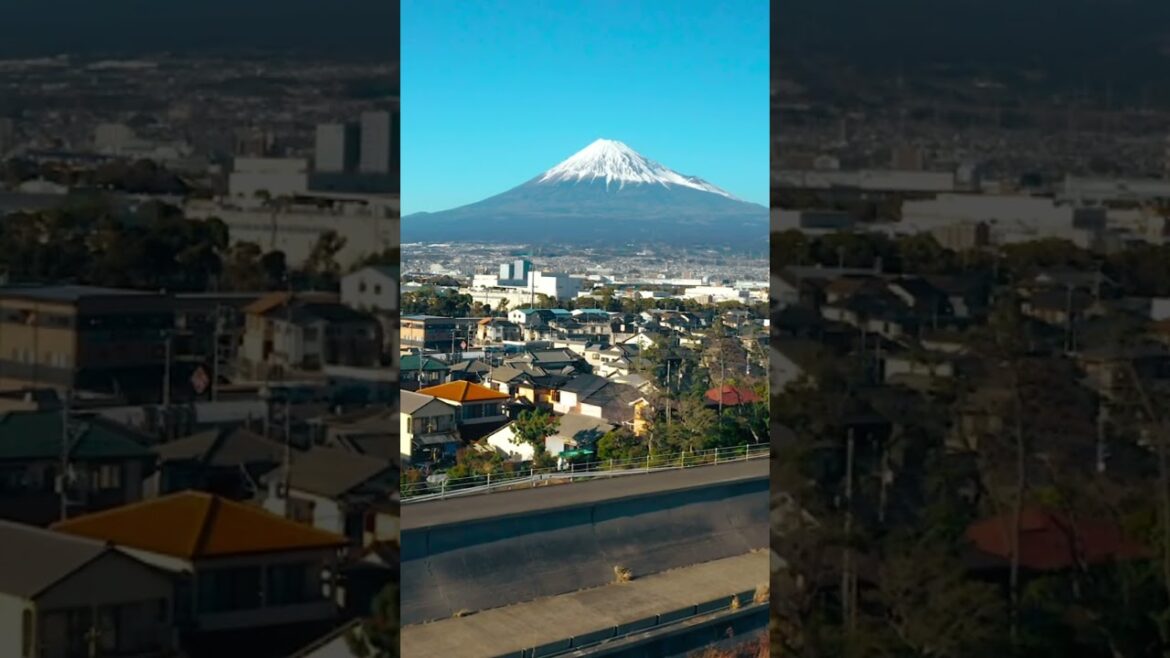📍🇯🇵 Japan Fuji san 🇯🇵
大事な時にはい て お酒の匂い嗅いでいる も言わずに歌わず
📍🇯🇵 Japan Fuji san 🇯🇵
Join us on adventures, beauty, culture, curiosities and details throughout this wonderful world!🌍
📌 Keep these images in mind to dream, plan and make your next trip to Japan, Mount Fuji a reality 🇯🇵
🎥 Made with love and care for you by: @InfiniteBeautyWorld
Mount Fuji (or Fujisan) is the highest and most iconic mountain in Japan, known for its nearly perfect conical shape and spiritual significance. Located southwest of Tokyo, this active stratovolcano is a UNESCO World Heritage site and a subject of art and pilgrimage for centuries.
Geographic and geologic features
Location and size: Fujisan stands at 3,776 meters (12,389 feet) tall, straddling the border of Yamanashi and Shizuoka prefectures in central Honshu. It is a prominent feature of the Fuji-Hakone-Izu National Park.
Volcanic nature: Though a popular tourist destination, Mount Fuji is an active volcano. It was built atop three successive volcanoes: Komitake, Ko Fuji (“Old Fuji”), and the most recent, Shin Fuji (“New Fuji”). Its last major eruption, the Hōei eruption, occurred in 1707 and covered Edo (modern Tokyo) in ash. Geologists classify it as dormant but continue to monitor it for activity.
Distinctive shape: Mount Fuji’s graceful, symmetrical cone is formed by layers of lava and ash from repeated eruptions, which is characteristic of a stratovolcano.
Surrounding area: The mountain is encircled by the Fuji Five Lakes (Fujigoko)—Kawaguchiko, Yamanakako, Saiko, Motosuko, and Shojiko—which offer picturesque reflections of the peak. The area also features lava tree molds, springs, and waterfalls, all revered as sacred.
Spiritual and cultural significance
Object of worship: From ancient times, Mount Fuji has been revered in Japanese mountain worship, which fuses Shinto and Buddhist elements. Followers of the Fuji-kō sect, founded in the Edo period, made pilgrimages to the mountain’s sacred sites.
Sacred sites: Various Shinto shrines, most notably the Fujisan Hongū Sengen Taisha, are located at the mountain’s base and crater. The mountain is considered the abode of the goddess Konohanasakuya-hime.
Artistic inspiration: The mountain’s grandeur has inspired Japanese art and literature for centuries. Famous works include Katsushika Hokusai’s 19th-century ukiyo-e woodblock print series, Thirty-six Views of Mount Fuji, which made the mountain a globally recognized symbol of Japan.
Climbing Mount Fuji
Official climbing season: The mountain is open for climbing primarily in July and August, when the trails are free of snow and the mountain huts are operating. Climbing outside this season is dangerous and strongly discouraged due to extreme weather conditions and trail closures.
Hiking trails: There are four main trails leading to the summit from different sides of the mountain. Each trail starts at a 5th station, which is accessible by vehicle.
Yoshida Trail: The most popular route, with many mountain huts and facilities.
Fujinomiya Trail: A shorter but steeper route, located on the Shizuoka side.
Subashiri Trail: Merges with the Yoshida Trail near the summit.
Gotemba Trail: The longest route, starting at a much lower elevation.
Summit sunrise (Goraiko): Many climbers time their ascent to arrive at the peak for sunrise, a cherished and popular experience.
Hiking preparation: The climb is long and strenuous, with thin air at high altitudes. Proper gear, staying hydrated, and pacing oneself are essential to prevent altitude sickness. Hikers can often get their walking sticks branded at mountain huts along the way as a souvenir.
To climb Mount Fuji, plan your trip during the official season (July to early September), choose a trail like the popular Yoshida Trail which is more beginner-friendly, and book a mountain hut to stay overnight. The ascent from the 5th station takes about six hours one way, so an overnight stay is recommended to reach the summit for sunrise. Be prepared for varying weather conditions with layers of clothing, and remember to account for the new trail fee and registration requirements.
Planning and logistics
Best time to climb: The official climbing season is from early July to early September.
Trails: The Yoshida Trail is the most popular and beginner-friendly, with direct bus access from Tokyo and many mountain huts. Other trails include the Subashiri, Gotemba, and Fujinomiya.
Permits and fees: A new mandatory 2,000 yen trail fee was introduced for 2024, along with an optional 1,000 yen conservation fee. Registration is required and can be done online or at the trailheads.
#japaneseculture #日本 #富士山 #fujisan #fuji #montfuji #japantravel #japneseculture #japnese #japaneseculture #japanesemusic #montefuji #ilovejapan #ilovejapanese #japantradition #japantraveltips #japantraveller #japantraditions #japantradition #mount


AloJapan.com